Morro de Sao Paulo is located 60 km south of Salvador the Capital of Bahia. It is part of an archipelago of 26 islands, only three of them inhabited. It’s in the district of the city of Cairú, an island of the archipelago Tinharé which is connected with the mainland. Beaches with clear water and white sand and palm trees beyond the Mata Atlantica (Atlantic forest) that make up the perfect scenario for the visitors of this tropical paradise. In Morro de Sao Paulo the beaches are called in numerical order, Primeira Praia (First Beach), Segunda Praia (Second Beach), Terceira Praia (Third Beach), Quarta Praia (Fourth Beach) and Quinta Praia (Fifth Beach) or Praia do Encanto Beach as it is also named. Each beach has its own history, trajectory and characteristics that offer different options for the tourist.
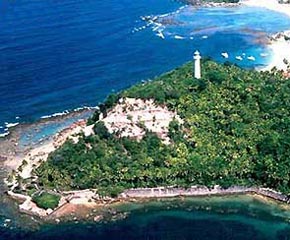
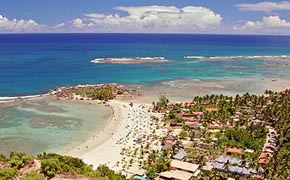
The First Beach is ideal to practice some water sports like scuba diving, surfing, wakeboarding, banana boat and tiroleza. It is well located situated between the village and the Second Beach. At the Second Beach movement of lot of people is found during the day and night. The Fourth and Fifth are more isolated beaches, considered semi deserted beaches and ideal for those who come to relax, to be isolated and who can afford it. Excellent choices of Pousadas, hotels and eco resorts offer all the infrastructure that tourists need.
Besides from the beaches of Morro de Sao Paulo, on the same island there are other beaches, they are Porto de Cima, Porto da Pedra, Gamboa do Morro, Garapuá and Pratigi. Most of them you can meet on walks when the tide is low. The beaches Garapuá and Pratigi are visited by boat or Jeep, this trips are booked on the island or online here.
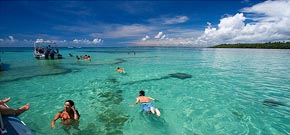
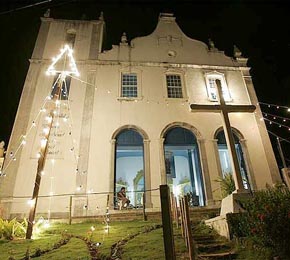
It’s worth knowing the rich history of this place and its historical monuments built in the seventeenth and eighteenth centuries. Fortaleza de Tapirandú – The fortress of Morro de Sao Paulo and its portico were built to prevent Dutch invasions and protect the Baía de Todos os Santos (Bay of All Saints) during colonial Brazil. The Fonte Grande (Great Source) for supplying water to residents and prisoners. At the time of its construction was considered an nacional example of technology. The Church of Nossa Senhora da Luz (Our Lady of Light) which is named after the holy patron of the island and is responsible for maintaining the Catholic faith throughout the centuries in this village. The Casarão (mansion) which was built and used for storage of flour and is actually a hotel was the largest building of its time and housed in the past Dom Pedro II in his visit to the island.
In Morro de Sao Paulo are no cars, it provides a peaceful and relaxing ambient away from the rush and bustle of the metropolis. There’s only one tractor that drives through the village every day in the morning to collect the garbage. There is also an ambulance at the Posto de Saúde (health post) that in emergency cases also enters the village. The hotels in the Fourth and Fifth Beach also have cars to facilitate access to the village of their guests. The path is made by a street parallel to the beach so the tourists do not see them. Passengers get of the cars at the Reseptivo (receptive) located behind the Second Beach.
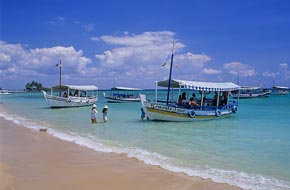
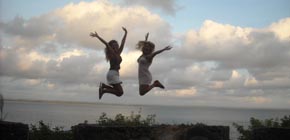
Morro de Sao Paulo fascinates all visitors worldwide. This is the place for all types of tourists, who like quietness and partying, those who want comfort, economic Hotels, Hostels or eco resorts, for those who enjoy the day and night. Morro de Sao Paulo is for you, because here you have the vacation by the way you want.
